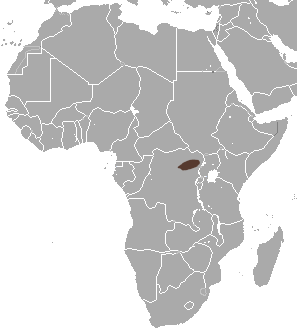
Caviidae, the cavy family, is composed of rodents native to South America and includes the domestic guinea pig, wild cavies, and the largest living rodent, the capybara. They are found across South America in open areas from moist savanna to thorn forests or scrub desert. This family of rodents has fewer members than most other rodent families, with 19 species in 6 genera in 3 subfamilies.

Caviinae is a subfamily uniting all living members of the family Caviidae with the exception of the maras, capybaras, and Kerodon. The subfamily traditionally contained the guinea pig or cavy-like forms along with the cursorially adapted (running) Kerodon. Molecular results suggest the Caviinae as so defined would be paraphyletic and Kerodon is more closely related to maras and capybaras than to other caviines. This led Woods and Kilpatrick (2005) to unite Kerodon and capybaras into the subfamily Hydrochoerinae within the Caviidae. These studies also suggest Microcavia and Cavia are more closely related to one another than either is to Galea.
The Brazilian yellow-toothed cavy is a cavy species from South America. It is found in Brazil.

Spix's yellow-toothed cavy is a rodent, a cavy species from South America. It is found in Bolivia east of the Andes and much of south central to northeastern Brazil. The species is found in open savanna and semiarid habitats, such as the Cerrado and Caatinga of Brazil. Its karyotype is 2n = 64 and FN = 118.

The acrobatic cavy also known as the Acrobatic Moco and Climbing Cavy is a cavy species native to Brazil in the Amazon rainforest. It is found from Goiás state to Tocantins state, west of the Espigão Mestre, Serra Geral de Goiás, and is also found in Terra Ronca State Park.

The white-rimmed warbler or white-browed warbler is a species of bird in the family Parulidae. It is found in Argentina, Brazil, Paraguay, and Uruguay. Its natural habitats are subtropical or tropical moist lowland forests, subtropical or tropical moist montane forests, subtropical or tropical moist shrubland, and heavily degraded former forest.
The common yellow-toothed cavy is a species of rodent in the family Caviidae, closely related to the domesticated guinea pig. It is found in Argentina, Bolivia, Chile, and Peru. Its karyotype has 2n = 68 and FN = 136. G. musteloides is the most common and widely found member of Galea, and is present at elevations ranging from 20 to 5000 m above sea level. It has yellow teeth.

The southern mountain cavy is a species of South American rodent in the family Caviidae.
The Andean mountain cavy is a species of rodent in the family Caviidae. It is found in Bolivia, Chile and Peru.

The Congo white-toothed shrew is a species of mammal in the family Soricidae. It is found in the Democratic Republic of the Congo and Uganda. Its natural habitat is subtropical or tropical moist lowland forests.

The short-palated fruit bat is a species of frugivorous megabat in the family Pteropodidae. It is found in Cameroon, Central African Republic, and Democratic Republic of the Congo. Its natural habitat is subtropical or tropical moist lowland forests. Births occur in May.

The Muenster yellow-toothed cavy is a species of rodent in the family Caviidae. It is known only from one location in Valle Hermoso in the Bolivian Andes, at an elevation of 2557 m. Specimens from this location were shipped to Muenster, Germany in 1997 for laboratory research, where the species was recognized and described. Galea monasteriensis was recognized on the basis of morphological, behavioral, and reproductive differences from related species. However, its habits in the wild have not been studied.

Galea is a genus of South American rodents of the family Caviidae. 5-6 extant species are known, found in Argentina, Bolivia, Chile, Peru and Brazil. They are:

Sturnira parvidens is a species of leaf-nosed bat found in Central America.












